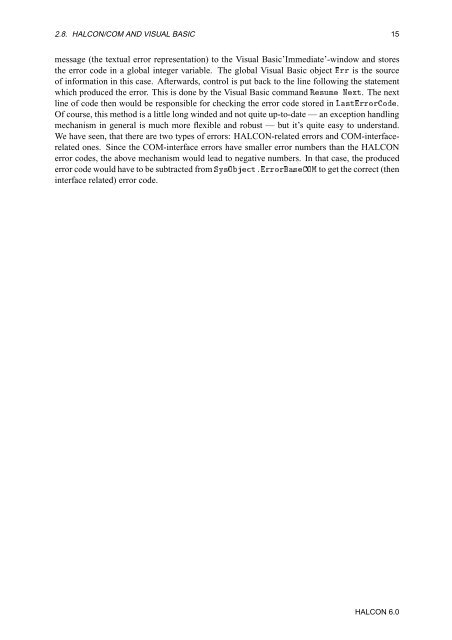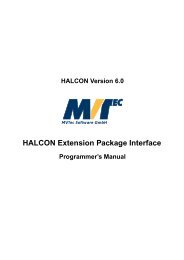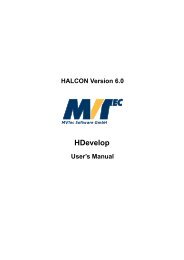HALCON/COM User's Manual
HALCON/COM User's Manual
HALCON/COM User's Manual
Create successful ePaper yourself
Turn your PDF publications into a flip-book with our unique Google optimized e-Paper software.
2.8. <strong>HALCON</strong>/<strong>COM</strong> AND VISUAL BASIC 15<br />
message (the textual error representation) to the Visual Basic’Immediate’-window and stores<br />
the error code in a global integer variable. The global Visual Basic object ÖÖ is the source<br />
of information in this case. Afterwards, control is put back to the line following the statement<br />
which produced the error. This is done by the Visual Basic command Ê×ÙÑ ÆÜØ. The next<br />
line of code then would be responsible for checking the error code stored in Ä×ØÖÖÓÖÓ.<br />
Of course, this method is a little long winded and not quite up-to-date — an exception handling<br />
mechanism in general is much more flexible and robust — but it’s quite easy to understand.<br />
We have seen, that there are two types of errors: <strong>HALCON</strong>-related errors and <strong>COM</strong>-interfacerelated<br />
ones. Since the <strong>COM</strong>-interface errors have smaller error numbers than the <strong>HALCON</strong><br />
error codes, the above mechanism would lead to negative numbers. In that case, the produced<br />
error code would have to be subtracted from ËÝ×ÇغÖÖÓÖ×ÇÅ to get the correct (then<br />
interface related) error code.<br />
<strong>HALCON</strong> 6.0
















